
SERA – Adjacent interacting masonry structures (AIMS)
SERA Adjacent Interacting Masonry Structures aims to fill the gap in the data by testing a half-scale stone masonry aggregate consisting of two units without interlocking stones under bidirectional seismic excitation. This repository offers raw data, functions utilized to process the data, alongside files that outline and document the procedure, processed data, and the functions used to generate visual representations of the processed data.
DADT – Damage-augmented digital twins for buildings
This is a dataset used for computing damage-augmented digital twins for buildings via an image-based approach. The method that uses this data set was presented in the paper “Damage-augmented digital twins towards the automated inspection of buildings” by Pantoja-Rosero et al. (2023).
Quasi-Static cyclic tests on masonry spandrels
This repository contains the data from experimental tests on four masonry spandrels subjected to quasi-static cyclic loading. Two different spandrel configurations were tested. The first configuration comprised a masonry spandrel with a timber lintel, and the second configuration, a masonry spandrel on a shallow masonry arch. For each configuration, two specimens were tested. The first was tested with a constant axial load in the spandrel, while for the second specimen, the axial load in the spandrel depended on the axial elongation of the spandrel.
Crack detection in buildings
This is the dataset used to assess the performance of the crack detection algorithm proposed by Pantoja-Rosero et al. (2022) in the article “TOPO-Loss for continuity-preserving crack detection using deep learning”.
Link to Paper
LOD3 building models
This is the dataset used for generating geometrical digital twins as LOD3 models for buildings using a structure-from-motion and semantic segmentation methods proposed by Pantoja-Rosero et al. (2022) in the article “Generating LOD3 building models from structure-from-motion and semantic segmentation”.
Link to Paper
Geometric digital twinning for stone masonry elements
This is the dataset used for computing geometrical digital twins for stone masonry elements using RGB images proposed by Pantoja-Rosero et al., in the article “Image-based geometric digital twinning for stone masonry elements”.
Link to paper
Crack detection in DIC images
This dataset contains crack images and corresponding annotated ground truth masks. This data was used to train, validate, and test a deep convolutional neural network to detect crack pixels on images taken as input for the digital image correlation (DIC) method.
Quasi-static shear-compression tests on small scale stone masonry walls with plaster
This dataset contains the results of six quasi-static cyclic shear-compression tests performed on single-leaf stone masonry walls made of limestone blocks and lime-based mortar joints. Of the six walls, four are tested under different axial load ratios, performing a cyclic load history with two cycles per increasing drift demand. Three are tested under the same axial load ratio but are subjected to different load histories, namely, one monotonic loading, one cyclic loading with two cycles per drift level and one cyclic loading with one hundred cycles per drift level.
Quasi-static shear-compression tests on rubble stone masonry walls with plaster
This dataset contains data from shear-compression tests performed on plastered rubble stone masonry walls, including digital image correlation measurements, gray-scale images captured during the tests, and two examples of 3D reconstruction of tested walls using structure-from-motion.
Seismic Performance of Slender RC U-shaped Walls with a Single-Layer of Reinforcement
This dataset contains the experimental data for two large-scale reinforced concrete U-shaped wall specimens tested at the Earthquake Engineering and Structural Dynamics Laboratory (EESD Lab), École Polytechnique Féderale de Lausanne (EPFL) in Switzerland. This dataset contains supplementary material for the journal paper titled “Seismic Performance of Slender RC U-shaped Walls with a Single-Layer of Reinforcement”, which contains some of the experimental observations and results. Thus, this dataset also contains MATLAB files associated with calculating the results presented in the journal paper and the corresponding figures and plots.
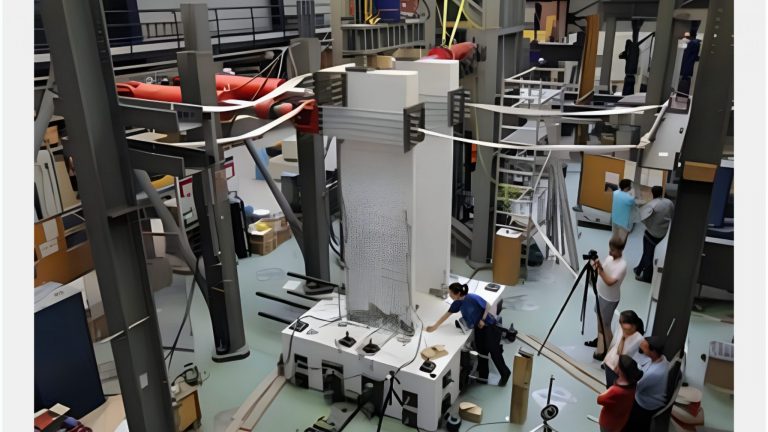
U-shaped walls under diagonal loading
Core walls are often used to provide horizontal stiffness and strength to mid- or high-rise buildings. The design practice is, however, largely based on findings from tests and analysis of rectangular walls subjected to uni-directional loading. Two quasi-static cyclic tests on U-shaped walls were conducted in which the walls were loaded in the diagonal direction. These tests highlight that the diagonal loading direction is critical for the following reasons: (1) The strain gradient across the wall width promotes out-of-plane buckling of the boundary elements in the flange ends; (2) Plane section analysis does not yield reliable moment capacity estimates for the diagonal loading direction and (3) under diagonal loading the compression depth in the flange end boundary elements is larger than for the other loading directions, exposing unconfined concrete to large compressive strains. The test data comprises conventional and optical measurement data as well as results of material tests.
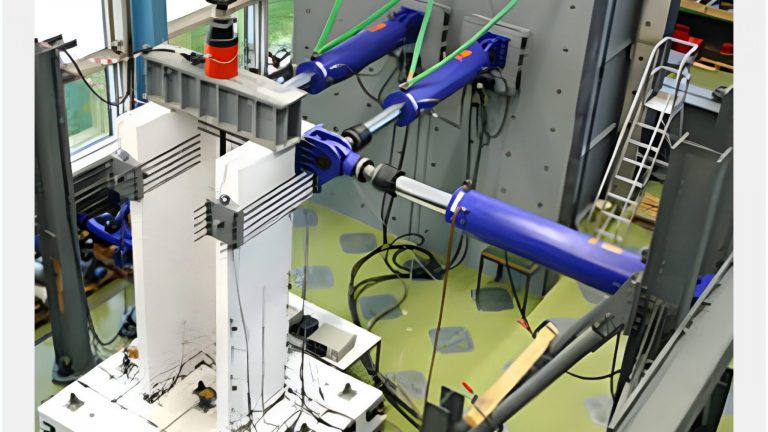
Quasi-static cyclic tests of two U-shaped reinforced concrete walls
Tests from Katrin Beyer’s Ph.D. thesis (Supervisors: A Dazio, MJN Priestley)
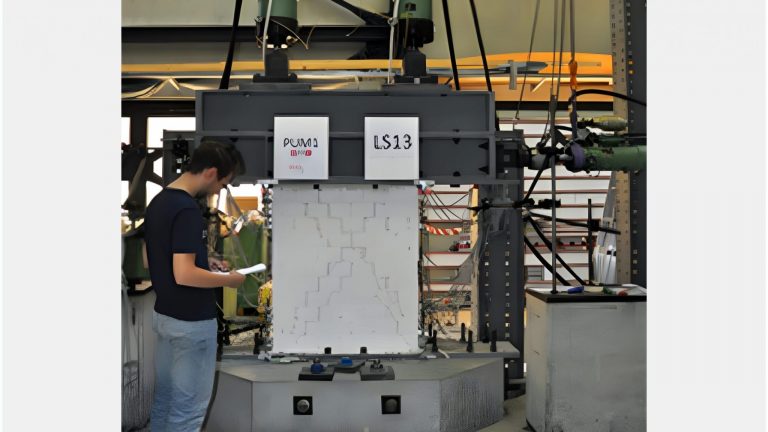
Quasi-static cyclic tests of 5 half-scale URM walls
Scaling hollow core clay brick masonry poses several challenges, and attempts in the past have shown that it is often difficult to achieve good matches with full-scale tests with regard to stiffness, strength, and displacement capacity. As preparation for the shake table test, a half-scale brick was developed, and five of the six full-scale tests on URM walls were repeated (first data set). The experimental results show a good match between full-scale and half-scale masonry.
Paper with test observations and comparison to full-scale masonry
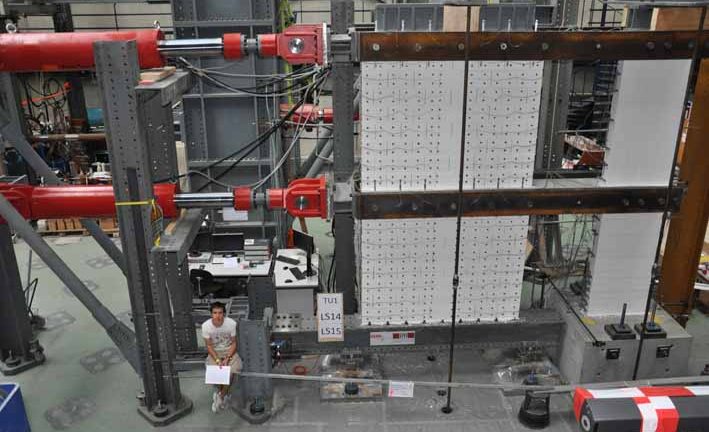
Quasi-static cyclic tests of 2 systems with one RC and one URM wall each
The test units were constructed at 2/3 scale and subjected to quasi-static cyclic in-plane loading. The test units consisted each of one RC and one URM wall, which were connected by two RC beams. The test units represent the lower two stories of a four-story reference structure. Their behavior was recorded using conventional and optical measurement techniques.
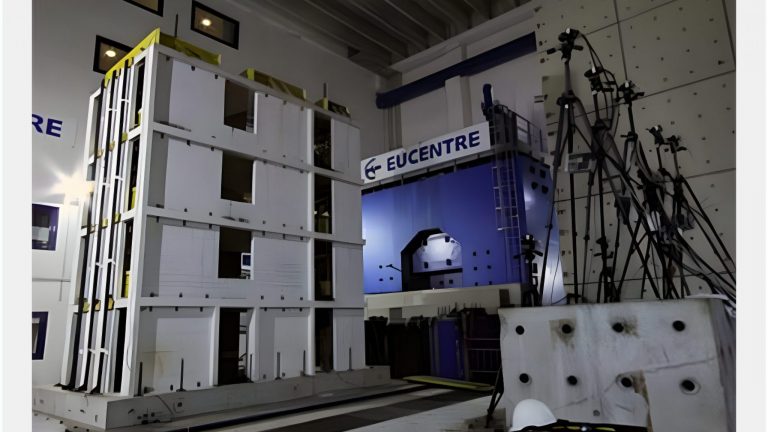
Shake table test of a 4-storey building with RC and URM walls
The test unit was constructed at half-scale and subjected to uni-directional shaking up to near collapse. The structure consisted of hollow core clay brick masonry walls and spandrels, reinforced concrete slabs, and walls. It was instrumented using conventional and optical measurement techniques. The latter was used to record the displacement field of one of the URM walls.
Paper with test observations and appendix on data structure
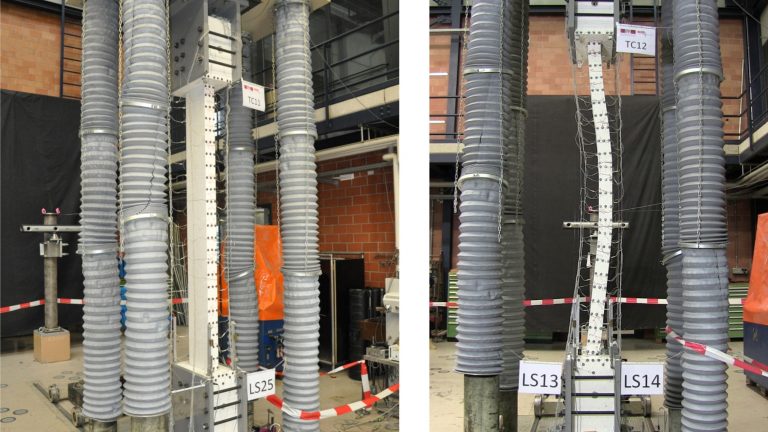
Uni-axial tension-compression tests on thin RC boundary elements
Thin reinforced concrete walls, which are reinforced with only a single layer of vertical reinforcement, are particularly susceptible to out-of-plane failure. In order to investigate the response of the corresponding wall boundary elements, twelve reinforced concrete members with a single layer of vertical rebars were tested under tension–compression cycles.
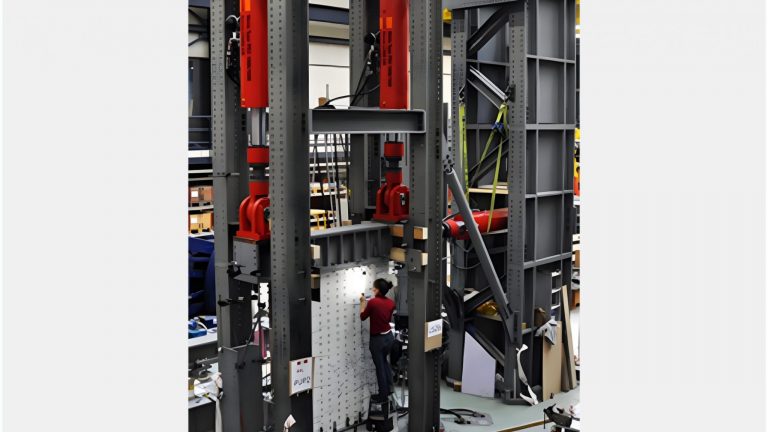
Quasi-static cyclic tests of 6 URM walls
The URM walls were constructed using hollow core clay bricks and normal cement mortar. The main parameters investigated were (i) the shear span and (ii) the axial load ratio. Next to the global response parameters (applied forces, top displacement), also the displacement field was continuously measured by means of 4 LEDs per brick.
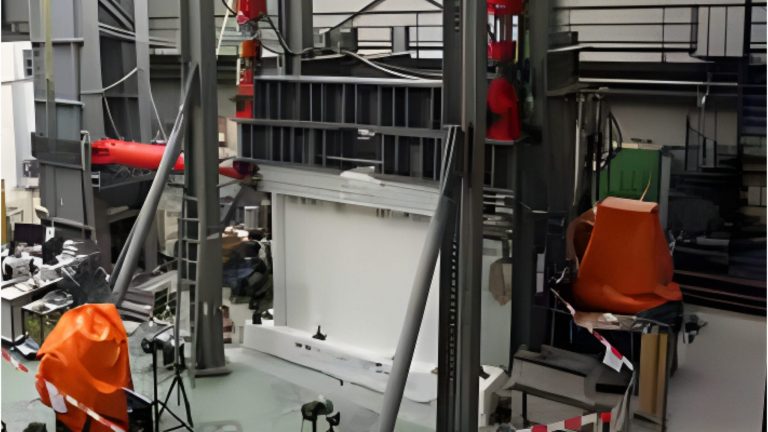
Uni- and bi-directional tests on five thin T-shaped RC walls
The test series investigates the influence of the wall thickness on member stability, the role of lap splices on damage distribution and displacement ductility, and the effects of simultaneous out-of-plane loading on the member response. The tests are unique with respect to the following aspects: TW1 and TW4 are the first tests on RC walls that developed large out-of-plane displacements along the wall height for which the entire 3D displacement field was measured. TW3 is the wall test with the largest lap splice length to shear span ratio documented in the literature and, therefore, the influence of the moment gradient on lap splice performance. Wall TW5 is geometrically and mechanically similar to unit TW2 but was loaded under bi-directional loading (with a larger shear span ratio). Test units TW4 and TW5 are one of the first bi-directional wall tests on nearly rectangular walls and allow, therefore, to make an initial assessment of the impact of bi-directional loading on wall performance.
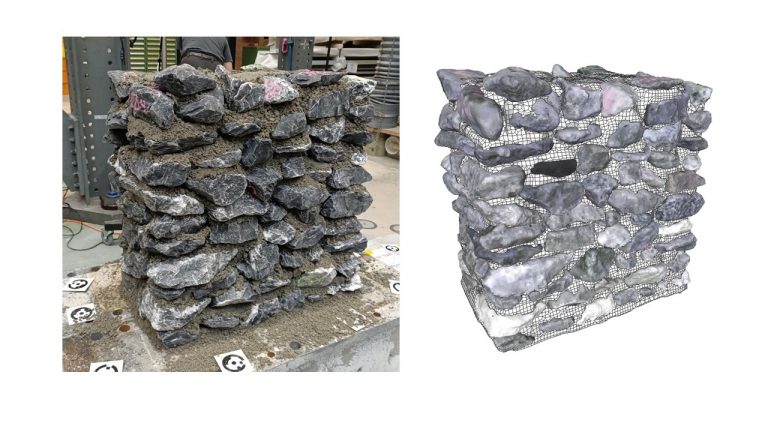
Geometrical digital twins of irregular stone masonry walls
In this dataset we present the geometrical digital twins of three real rubble stone masonry walls built in the lab from experienced masons. The dataset includes:
- the geometry of individual stones and their position within the wall in point cloud and surface meshes
- raw data of the laser point cloud of individual stones and walls during the construction process
- algorithms for data analysis and processing.
Given that the actual walls were tested under in-plane quasi-static shear-compression loading, this dataset offers an opportunity to benchmark numerical models for stone masonry against experimental results.
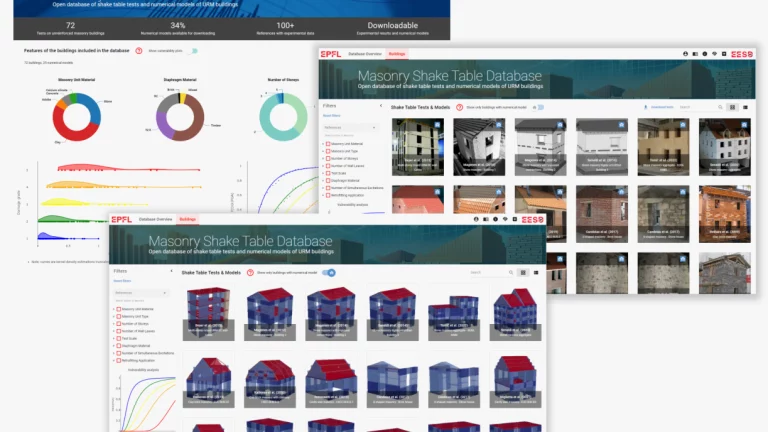
Masonry shake table database
This database of shake table tests conducted on full URM buildings aims to contribute with an open-access web-based interactive platform that serves as the first centralized database for this type of test.
The platform is organized in a consistent format, making it easy to obtain specific information and test results. Furthermore, users can download relevant data and ready-to-use numerical models for modeling validation and uncertainty quantification studies in the seismic assessment of URM buildings.